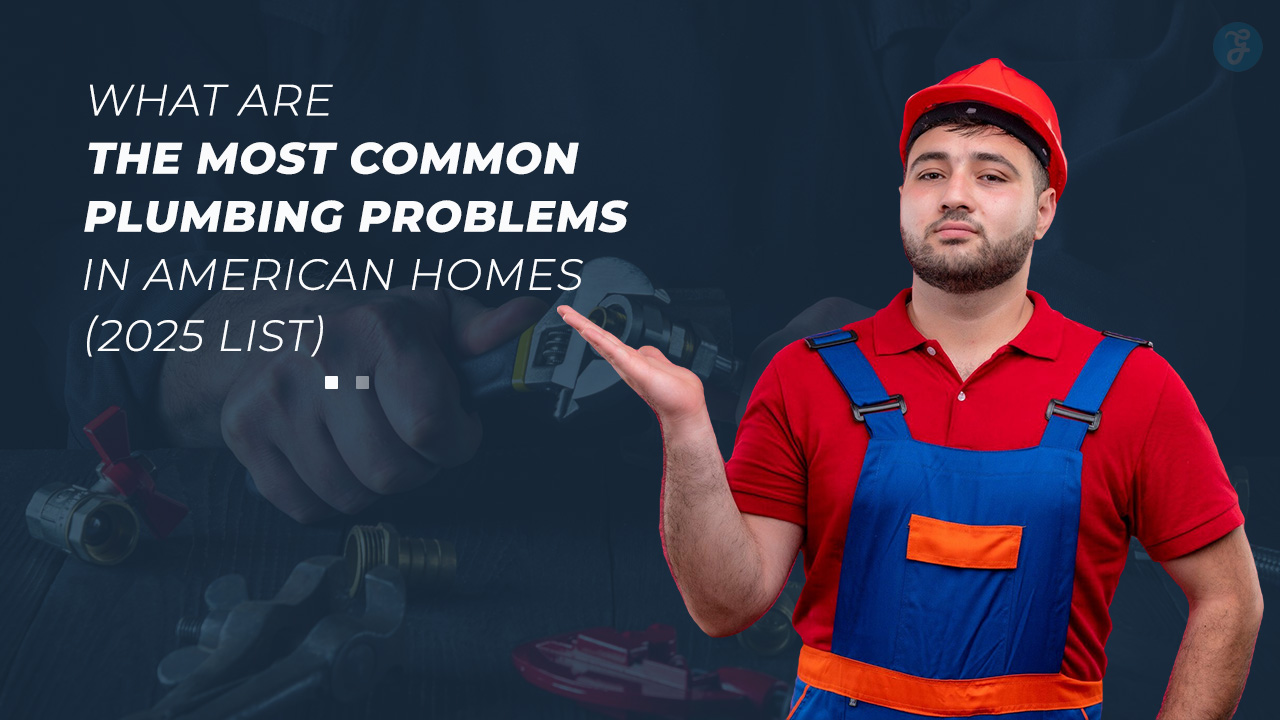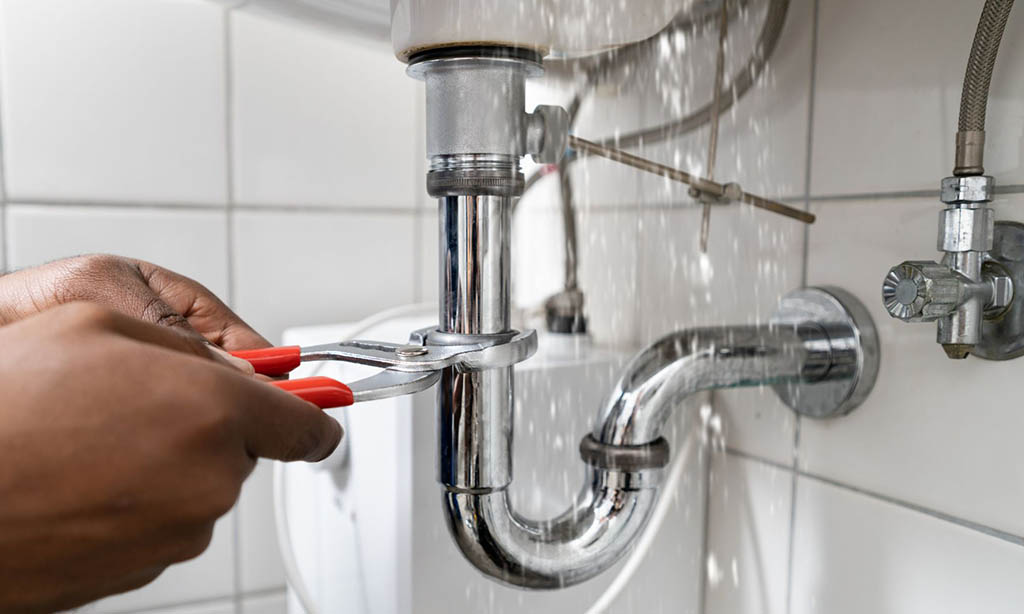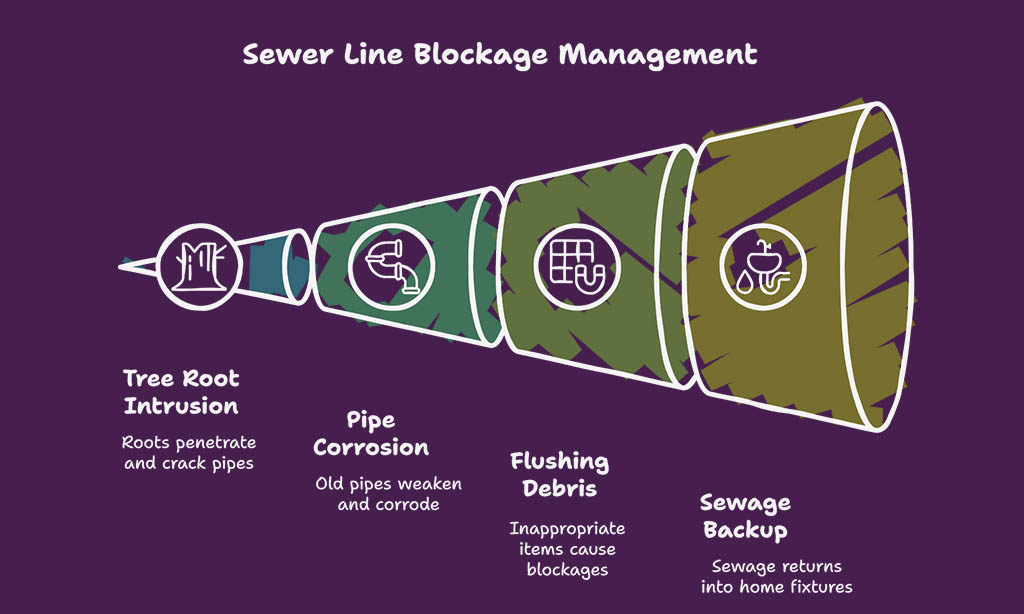A dripping faucet at night can drive anyone crazy. Or maybe your shower turns cold halfway through. These plumbing problems are more common than you think, and they’re frustrating.
In American homes, issues like clogged drains or leaky pipes happen often. Some are quck fixes, while others need expert help. This guide will show the most common problems and tips to handle them.
Keep reading—you’ll learn what to watch for!
Clogged Drains and Toilets
Clogged drains happen when things like hair, grease, or food scraps block the flow. A slow-draining sink or tub means trouble is brewing. Kitchen sinks often struggle with leftover grease and crumbs.
Bathroom drains get clogged from soap scum and tangled hair. Toilets clog when too much toilet paper or non-flushable items go down. Kids sometimes flush toys by accident.
A plunger can fix many clogs quickly. For tougher messes, a drain snake works wonders. Avoid using harsh chemical drain cleaners—they can harm pipes over time! Keeping a trash bin nearby helps reduce flushing what shouldn’t go down the toilet in the first place.
Smart plumbing habits save you headaches later on!
Leaking Faucets and Pipes
Leaky faucets waste water fast. A single dripping faucet can waste over 3,000 gallons of water yearly. That much water could fill a pool! Leaks often come from worn-out washers, loose parts, or pipe corrosion.
Fixing these issues early saves money on your water bill and prevents worse damage. Some leaks are silent and hidden behind walls or under sinks. Watch for puddles, mold, or strange smells to spot them.
Pipes with leaks cause serious trouble too. Rusty pipes in older homes make the problem more common. Small cracks grow into bursts if ignored, leading to costly repairs and water damage in basements or ceilings.
Water hammer noises can also hint at high-pressure issues inside pipes that lead to leaks later on. Tightening joints or replacing faulty seals helps stop leaks before they spread further through plumbing fixtures like spigots or hose bibs around your home’s system.
Running Toilets
A running toilet wastes gallons of water daily. This can skyrocket your bill and hurt the environment. The main cause is often a faulty flapper valve. It doesn’t seal properly, letting water flow continuously into the bowl.
Sometimes, the float isn’t adjusted right, or there’s sediment buildup affecting the toilet’s fill valve. These problems are easy to fix with basic tools like a screwdriver or wrench.
Regular plumbing maintenance helps prevent bigger issues later on.
Fixing a small leak now can save big bucks and water down the line.
Low Water Pressure
Low water pressure makes daily tasks harder. Showers feel weak, and filling your dishwasher takes forever. This problem can come from corroded pipes, clogged faucets, or a partially closed water valve.
Pipe corrosion is common in older homes with aging plumbing systems.
Leaks are another culprit. A hidden water leak reduces flow without you noticing right away. Sediment buildup in water heaters can also lower pressure over time. Hiring a licensed plumber for camera inspections helps find the cause fast.
Fixing this issue saves time, money, and stress long-term!
Water Heater Problems
Hot water loss is a big issue. Water heater problems can cause this. Sediment builds up inside the tank over time. This reduces efficiency and lowers hot water supply. Many older homes face these issues more often due to aging heaters or pipe corrosion.
Leaks around the base of your heater might mean trouble too. These leaks lead to high water bills and possible water damage if left alone.
Sometimes, strange noises come from the tank when it heats up. This could mean parts are wearing out or sediment is hardening at the bottom of your heater. Water temperature issues happen if thermostats fail or heating elements break down.
Regular plumbing maintenance helps avoid sudden breakdowns in your unit, keeping hot showers flowing without stress!
Burst or Frozen Pipes
Cold winters can freeze water inside pipes. Frozen pipes expand and may burst, causing major water damage. Even small cracks in a pipe can flood your home with gallons of water in minutes.
Older homes with lead or corroded pipes are at higher risk.
Turn off the main water valve right away if a pipe bursts. Insulate exposed pipes to prevent freezing during cold months. A dripping faucet could help keep the water moving on icy nights.
If damage occurs, call a licensed plumber for fast repairs or replacement. Prevention saves money and headaches later!
Sewer Line Blockages
Tree roots can break into sewer pipes. They grow toward moisture and crack the lines. Old, corroded pipes make this worse. Blockages also happen from flushing things like wipes or grease down toilets and drains.
Signs include slow drains, gurgling sounds, or foul smells in your home. If left untreated, sewage may back up into sinks or tubs. A camera inspection helps locate the clog fast. Use a drain snake for small clogs, but bigger problems need a licensed plumber’s help to clear the sewer system properly.
Sump Pump Failures
Sump pumps protect basements from flooding. When they fail, water can pool fast. Power outages often cause these failures during heavy storms. A clogged pipe or stuck float switch makes the pump stop working.
Older sump pumps may rust or wear out over time.
Check your pump every few months to avoid problems. Clear debris around it and test if it runs right. Backup power sources, like a battery, can help in emergencies. Homes with septic systems or frequent flooding need strong sump pumps to stay dry and safe.
Signs of Plumbing Damage
Water stains, strange smells, or weird noises could mean trouble—read on to spot these red flags early!
Bubbling Paint or Ceiling
Bubbling paint or a swollen ceiling can point to water leaks. This often happens from pipe corrosion, leaky pipes, or running toilets upstairs. The dampness allows mold and mildew to grow, causing health risks.
Look for new water stains—it shows recent damage.
Act quickly if you notice this issue. A dripping faucet or leaking water valve might be the hidden culprit. Ignoring it could lead to costly repairs or even structural damage. Always check ceilings near bathrooms, kitchens, or laundry rooms for signs of trouble like these!
Standing Water on the Lawn
Water pooling on your lawn might signal plumbing problems. Leaky pipes or sewer line issues could be the cause. Tree root intrusion may also break underground pipes, leading to seepage.
A damaged septic tank can overflow and leave wet patches.
This water waste invites mold and mildew, harming both plants and air quality. Watch for foul smells or slow drains in your home too; these are warning signs of bigger troubles below ground.
Call a licensed plumber to inspect with tools like a camera inspection before things worsen.
When to Call a Professional Plumber
Sometimes plumbing problems are too hard to fix on your own. Knowing when to call a licensed plumber can save time and money.
- Bad leaks or bursts—especially frozen pipes in winter—need quick help to prevent water damage.
- Drains that stay clogged after trying a drain snake usually need expert tools.
- Low water pressure caused by pipe corrosion or blockages requires professional inspection.
- Hot water running out fast could mean serious water heater problems needing repairs or replacement.
- Overflowing toilets that keep flooding can signal deeper plumbing issues like sewer line blockages.
- Hidden leaks, shown by bubbling paint or ceiling stains, often need camera inspections to find the source.
- Strange smells from drains might point to sewer line issues, like tree root intrusion or clogs in main pipes.
- Signs of standing water around the yard may mean broken outdoor pipes or sewer line cracks underground.
- Mold and mildew appearing indoors means moisture is hiding somewhere and needs attention fast.
- Loud banging noises from pipes suggest loose fittings or pressure buildup, which should be fixed quickly.
- A dripping faucet or constantly running toilet wasting gallons daily is better handled by an experienced plumber.
A professional ensures safety and long-term fixes for these common plumbing issues!
Takeaways
Plumbing problems can sneak up on anyone. Clogged drains, leaking pipes, and low water pressure are common headaches in many homes. Fixing small issues early saves time and money. If the problem feels too big or tricky, call a licensed plumber for help.
Don’t let drips turn into disasters—stay ahead of plumbing troubles!
FAQs
1. What are the most common plumbing problems in American homes?
Clogged drains, leaky pipes, dripping faucets, running toilets, and low water pressure are some of the most frequent issues homeowners face.
2. Why does my faucet keep dripping?
A dripping faucet usually happens because of worn-out washers or seals inside the tap. Over time, these parts break down and need replacing to stop leaks.
3. How can I fix a clogged drain?
You can try using a drain snake or cleaning tool to remove blockages like hair or debris. If that doesn’t work, call a licensed plumber for help before it causes bigger plumbing problems.
4. What causes low water pressure in homes?
Low water pressure often comes from pipe corrosion, clogged aerators on faucets, or issues with your main water valve.
5. Can tree roots really damage sewer lines?
Yes! Tree root intrusion is one of the leading causes of sewer line issues because roots grow toward moisture and crack pipes over time.
6. When should I hire a plumber for frozen pipes?
If you notice no water flow during winter or suspect frozen pipes might burst soon, contact a full-service plumbing company right away to avoid costly repairs like water damage or mold growth later on!





































